WEBSITE PLANNING: THE CORNER STONE OF A SUCCESSFUL ONLINE PRESENCE
Your website frequently serves as the initial point of contact between your audience and your company in today’s digitally-first society. A well-designed website is essential to reaching your objectives, whether you’re starting a business, growing a digital agency, or establishing your own personal brand. Website planning involves more than just picking colors and typefaces; it involves consciously building an online presence that advances your corporate goals.
In this thorough blog, we will look at:
- What is Website Planning?
- Website Planning and Creation in Digital Marketing
- Website Planning Process
- Website Planning Tool
Website planning is the initial and arguably most critical phase in the process of developing a website. It involves a strategic approach to defining the purpose, goals, target audience, structure, and features of the site before any design or development begins. Without clear planning, even a visually attractive website may fail to deliver results.
The planning phase sets the tone for the entire project, ensuring that the final product aligns with business goals, brand identity, and user expectations. This process includes conducting market research, analyzing competitors, outlining user journeys, and mapping content, all to create a roadmap that guides designers, developers, and content creators. Proper website planning helps minimize rework, save time, and reduce costs in the long run, while maximizing the return on investment (ROI).
Effective website planning encompasses several essential elements. Firstly, defining the website’s objective is crucial—whether it’s generating leads, selling products, educating customers, or simply building brand credibility. Next, identifying the target audience helps in designing a user-centric experience. This includes considering demographic factors, user behaviors, and preferences. The site architecture or sitemap is another vital component; it structures the flow and navigation of the website in a logical way to enhance user experience.
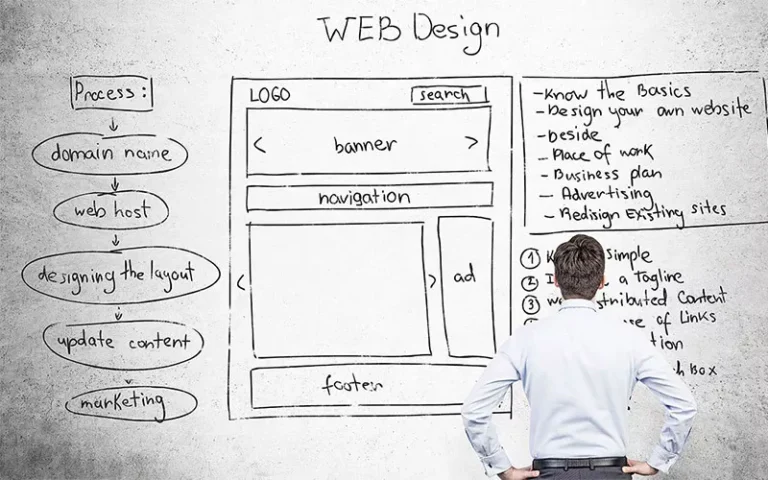
Additionally, planning for content strategy, including blogs, landing pages, CTAs (Calls to Action), and media elements, ensures that the website remains informative, engaging, and optimized for SEO. Budget allocation, timeline management, and team roles should also be clearly defined to ensure smooth execution.
In the context of digital marketing, website planning is not just about aesthetics and functionality—it’s about integrating marketing objectives into the structure of the website. A well-planned website serves as the central hub for all digital marketing efforts including SEO, PPC, email campaigns, and social media promotions. Every page, button, and content piece should be strategically planned to lead users toward conversion goals. This includes incorporating keywords for search visibility, designing user-friendly interfaces for better engagement, and integrating analytical tools to track visitor behavior.
Additionally, planning for responsive design and mobile optimization is essential, given the increasing number of mobile users. A successful digital marketing campaign always begins with a robust website that is planned with conversion, performance, and user satisfaction at its core.
Several tools are available to assist with website planning, ranging from basic sketching and wireframing software like Balsamiq and Figma to full-scale project management platforms like Trello, Asana, or Notion. For more advanced planning, tools like Google Analytics and SEMrush can provide data on user behavior and keyword opportunities, aiding in content and SEO strategy.
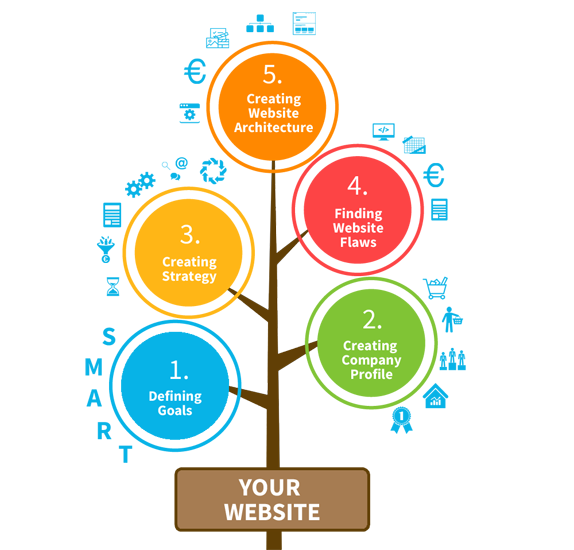
Creating wireframes and mockups helps visualize the structure and flow before development begins, reducing confusion and revisions later. Content management systems (CMS) like WordPress or Webflow can also be part of the planning conversation, especially when deciding how scalable or customizable the site needs to be. These tools not only streamline communication among teams but also enhance productivity and ensure every stage of the planning is backed by data and insight.
Website planning is not a one-time task—it should be seen as an ongoing strategy that evolves with business needs and market trends. A well-planned website is easier to maintain, scale, and adapt over time. For instance, businesses can quickly launch new campaigns, integrate new tools, or add new product pages without disrupting the user experience.
Moreover, regular review and planning help ensure that the website continues to meet the expectations of both users and search engines. Businesses that invest in solid planning are more likely to see better engagement, higher conversion rates, and sustained digital growth. In essence, website planning is not just about building a site—it’s about building a future-proof digital ecosystem that supports long-term business success.

WHAT IS WEBSITE PLANNING
The process of establishing a website’s goals, structure, content, and functionality prior to production is known as Website Planning. Consider it like drawing up a plan for your digital property. Web designers and developers should not begin constructing a website without a comprehensive strategy, just as architects would not begin building a house without one.
This procedure entails:
- Recognizing the intended audience
- Establishing the objectives of a website (e.g., e-commerce, brand exposure, lead generation)
- Making a sitemap
- Organizing user flow and navigation
- Selecting tools, platforms, and technology
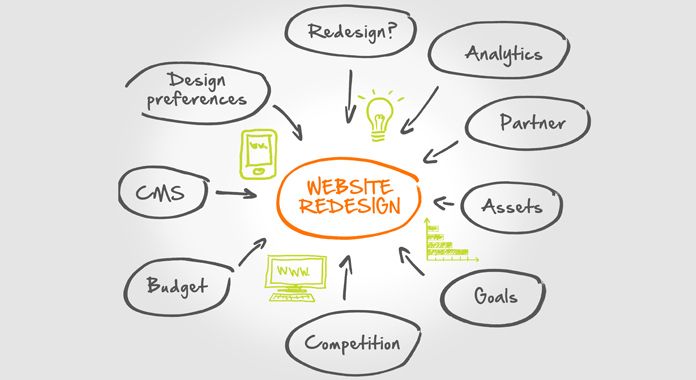
Planning a website is crucial because it reduces the risk of failure and ensures that time and resources are used effectively. Without a clear plan, websites often suffer from disorganized content, poor navigation, slow loading times, or misalignment with marketing goals. A planned approach addresses these concerns in advance by setting clear goals, deciding on a logical page structure, and identifying the content needed to communicate the brand’s message. It also allows for better collaboration between designers, developers, marketers, and content creators.
A strong website planning process includes several key elements: goal setting, target audience analysis, content mapping, SEO strategy, visual and functional design planning, and technology selection. Creating wireframes or sitemaps during this stage helps visualize the layout and flow of the website. Planning also involves setting deadlines, assigning roles, and budgeting appropriately. By clearly documenting each step, businesses can streamline the development process and minimize costly revisions.
In the digital age, a website is often the first interaction customers have with a brand. Planning ensures that this first impression is a positive one. It allows businesses to tailor their website to user needs, optimize for search engines, and integrate marketing tools like CRM systems, email subscriptions, and analytics. Ultimately, website planning is not just a technical task—it’s a strategic one that sets the tone for how the brand will be perceived online and how effectively it will engage its digital audience.
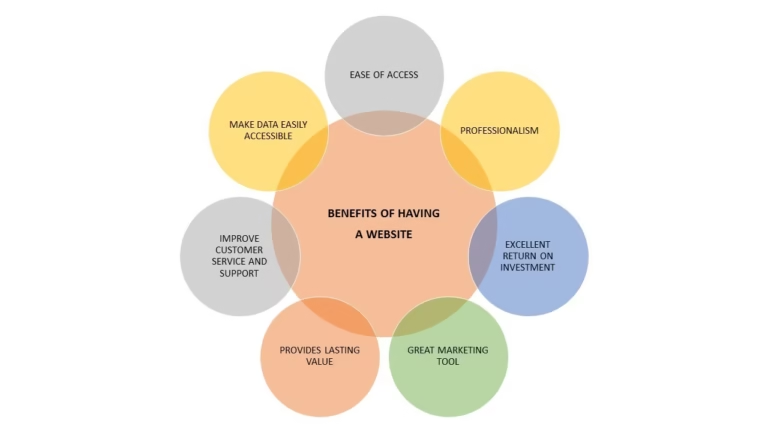
BENEFITS OF WEBSITE PLANNING
The Main Advantages of Website Design
- Define the purpose of your website and the activities you want people to perform with the aid of clear goals and direction.
- Improved User Experience (UX) planning guarantees logical content flow, easy navigation, and an intuitive layout.
- Enhanced Performance in SEO
- Optimized content, metadata, and keyword strategy are made possible by structured planning.
- Efficiency in Time and Costsaves time and money by reducing the number of modifications made during development
- Consistent usage of brand-consistent colors, typefaces, and messaging is guaranteed by stronger branding
- Optimization for Mobile and Speed gives responsive design and quickly loading pages a priority right away.
- Flexibility and Scalability
- Plans for future expansion, such as e-commerce, a blog, or additional features.
An efficient content strategy determines the content requirements for every page and the production schedule.
One of the most significant benefits of website planning is that it provides a clear sense of purpose and direction for the entire project. By defining objectives early—such as increasing brand awareness, generating leads, or boosting online sales—businesses can ensure that every element of the site is built to support those goals. This alignment allows for more targeted content, effective calls-to-action, and purposeful design choices. Without planning, websites often end up cluttered, unfocused, or disconnected from a business’s actual objectives. A solid plan acts as a blueprint, ensuring that all stakeholders—from designers and developers to marketers and content writers—are on the same page throughout the project.
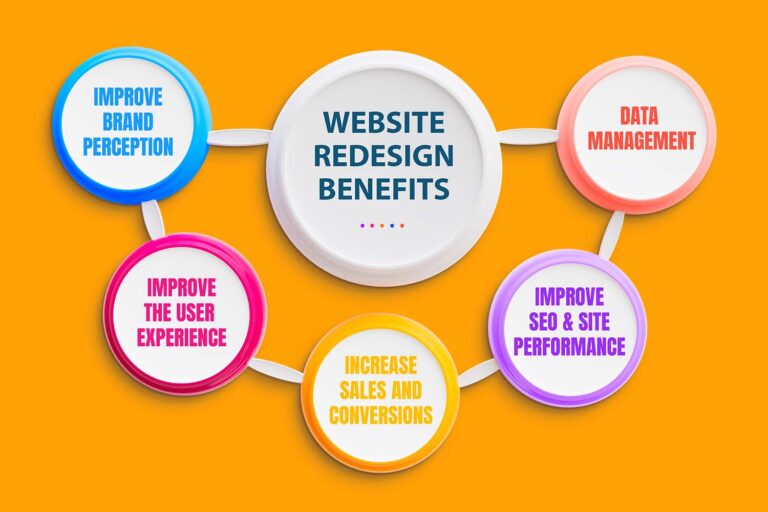
Enhances User Experience (UX) and Navigation
Proper website planning leads to a more intuitive and satisfying user experience. When the structure of the site is thoughtfully mapped out in advance, it results in better navigation, logical information flow, and a layout that is easy for users to understand. Planning helps identify user personas and predict how different segments of the audience will interact with the site. This foresight allows for the creation of clear navigation menus, strategically placed content, and responsive design elements that adapt seamlessly across devices. A well-planned site anticipates user needs, minimizes confusion, and reduces bounce rates, which in turn improves engagement, trust, and conversions.
Saves Time, Money, and Resources
Another major benefit of website planning is cost-effectiveness. While it may seem like a time-consuming step, careful planning actually saves time and resources over the course of the project. Without a detailed plan, teams often face unexpected revisions, missed deadlines, and scope creep—where unplanned tasks and features increase the workload and budget. Planning helps anticipate technical requirements, identify potential challenges, and prevent duplicated efforts. By creating wireframes, content outlines, and feature lists in advance, businesses can avoid unnecessary rework and costly fixes later in the development process. It also allows for a smoother workflow and better collaboration across teams.
Supports SEO and Digital Marketing Integration
A strategically planned website is much more effective in supporting SEO and broader digital marketing efforts. Planning helps identify the right keywords to target, the type of content needed for search visibility, and where to position CTAs to drive conversions. It ensures that the site architecture is optimized for both search engines and users, with a logical URL structure, internal linking, and fast-loading pages. Additionally, website planning includes integrating analytics, social media, CRM, and email marketing tools that are crucial for tracking performance and nurturing leads. In short, website planning lays the groundwork for a digital presence that is not only beautiful but also discoverable, functional, and ready for growth.
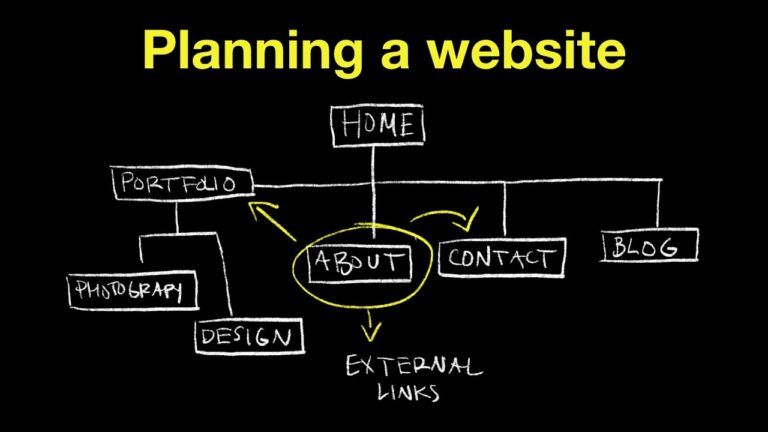
WEBSITE PLANNING AND CREATION IN DIGITAL MARKETING
Your website serves as the focal point of all online activity in digital marketing. Everything points back to your website, including social media, sponsored posts, SEO, and content marketing. As a result, your marketing approach and website design must complement each other.
Digital marketing is impacted by website planning in the following ways:
- Search Engine Optimization
Planning with keyword research guarantees that your pages will rank highly in search results. The original strategy includes responsive design, metadata organization, and strategic content placement.
- Experience of the User (UX)
Conversion is the main goal of digital marketers. From the moment a consumer lands on your page until they click “buy now” or “subscribe,” planning guarantees a seamless customer experience.
- Monitoring Performance
Analytics are necessary for marketing initiatives. Integrating technologies like heatmaps, A/B testing frameworks, and Google Analytics is part of proper planning.
- Compatibility with Content Marketing
To help your inbound marketing efforts, you should prepare ahead for a blog section, video gallery, or resource center.
- Mobile Optimization and Speed
You lose visitors if your website takes too long to load. It is easier to keep traffic from digital campaigns when mobile adaptability and lightweight design are planned for.
In short, there is a close relationship between the planning and development of websites in digital marketing. Without a carefully thought-out website to back it up, an effective digital marketing strategy is impossible.
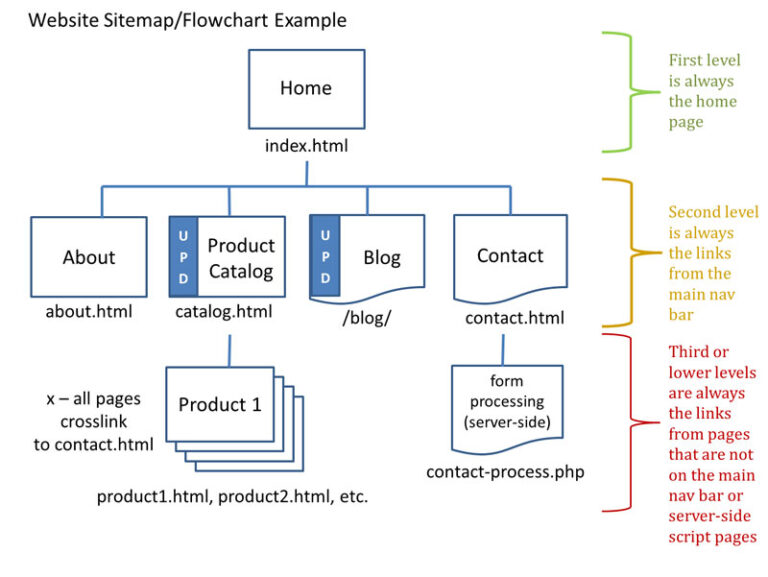
WEBSITE PLANNING PROCESS
Let’s divide the process of designing a website into manageable steps:
1. Establishing Objectives
Specify the goals you have for your website
Examples include raising brand exposure, selling products, and creating leads
2. Research on Target Audiences
Who are your users
What issues do they have, and how might your website assist in resolving them
3. Analysis of Competitors
Examine a minimum of three to five rivals
Take note of their SEO tactics, call-to-actions, design, and content style
4. Sitemap & Information Architecture
Create the website’s structure
Create a sensible hierarchy by grouping the pages (Home, About, Services, Blog, Contact)
5. The use of wireframes
To see the layout and user flow, make low-fidelity page mockups
Here, programs like Balsamiq, Adobe XD, or Figma are helpful
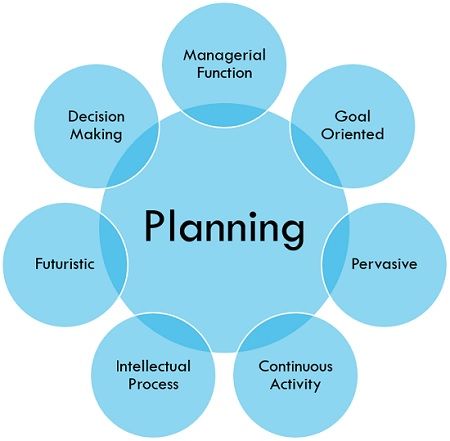
6. Strategy for Content
Decide what information will be included on each page
Add SEO-friendly keywords, obvious calls to action, and captivating images
7. Selection of the Technology Stack
Select a CMS (such as Shopify, Webflow, or WordPress)
Choose third-party integrations and hosting services
8. Planning for Design
Establish your visual aesthetic (colors, typefaces, and image standards)
Make sure the brand is consistent on every page
9. Analytics and SEO Configuration
Add mobile optimization, meta tags, and schema markup
Make plans to integrate with Google Search Console, Google Analytics, and more technologies
10. Plan of Launch
Make a launch checklist that includes domain, SSL, backup, and testing
Create a marketing plan for promotion after the launch
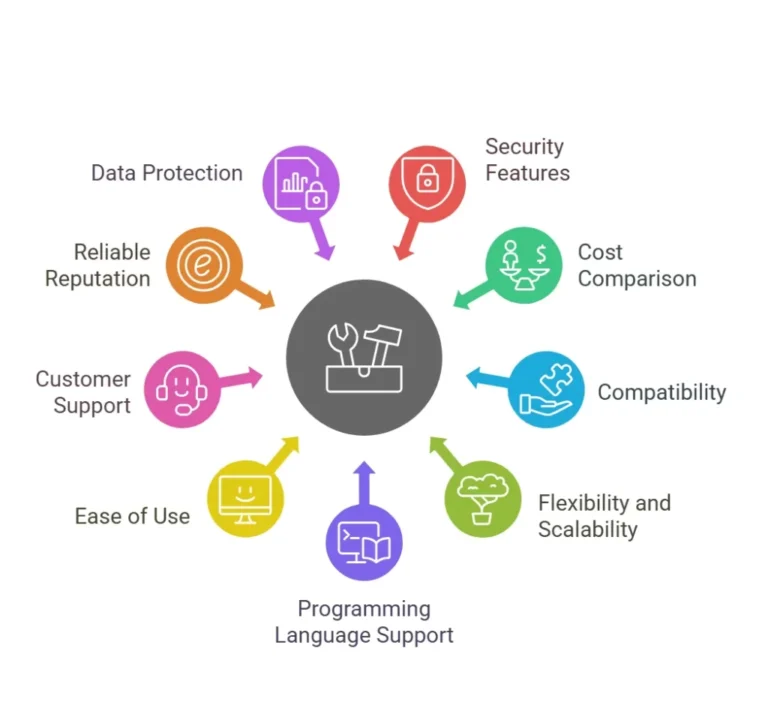
WEBSITE PLANNING TOOLS TO BOOST YOUR ONLINE PRESENCE
Here are a few of the best tools in several categories to help you expedite the planning process:
1. Wireframing and Sitemap Tools
Lucidchart: A tool for outlining the architecture of websites
For wireframing and prototypes, use Figma or Adobe XD.
2. Tools for Content Planning
Trello/Notion: For teamwork and editorial planning
Google Docs: A tool for creating and managing copy for websites
3. Research Tools for SEO
For competitor analysis and keyword research, use SEMrush, Ahrefs, or Ubersuggest
Answer The Public: A resource for identifying popular search terms
4. Monitoring and Analytics
Google Analytics: Monitor conversion and user behavior
Hotjar: Gain insight into how users interact with heatmaps
5. Project Management Asana/ClickUp
For overseeing the creation of websites
6. Brand and Design Resources
Adobe Express and Canva: Fast graphics and branding
Coolors.co: Design color schemes for websites
Website planning tools play a critical role in transforming ideas into structured strategies and visual blueprints. These tools help streamline the initial phases of web development by allowing teams to map out the site’s layout, organize content, create wireframes, define user journeys, and manage workflows. By using specialized planning software, businesses can avoid ambiguity, miscommunication, and unnecessary revisions down the road. Whether you’re designing a basic portfolio website or a complex e-commerce platform, planning tools provide clarity and cohesion among teams—especially when multiple stakeholders, such as designers, developers, content creators, and marketers, are involved in the process.
